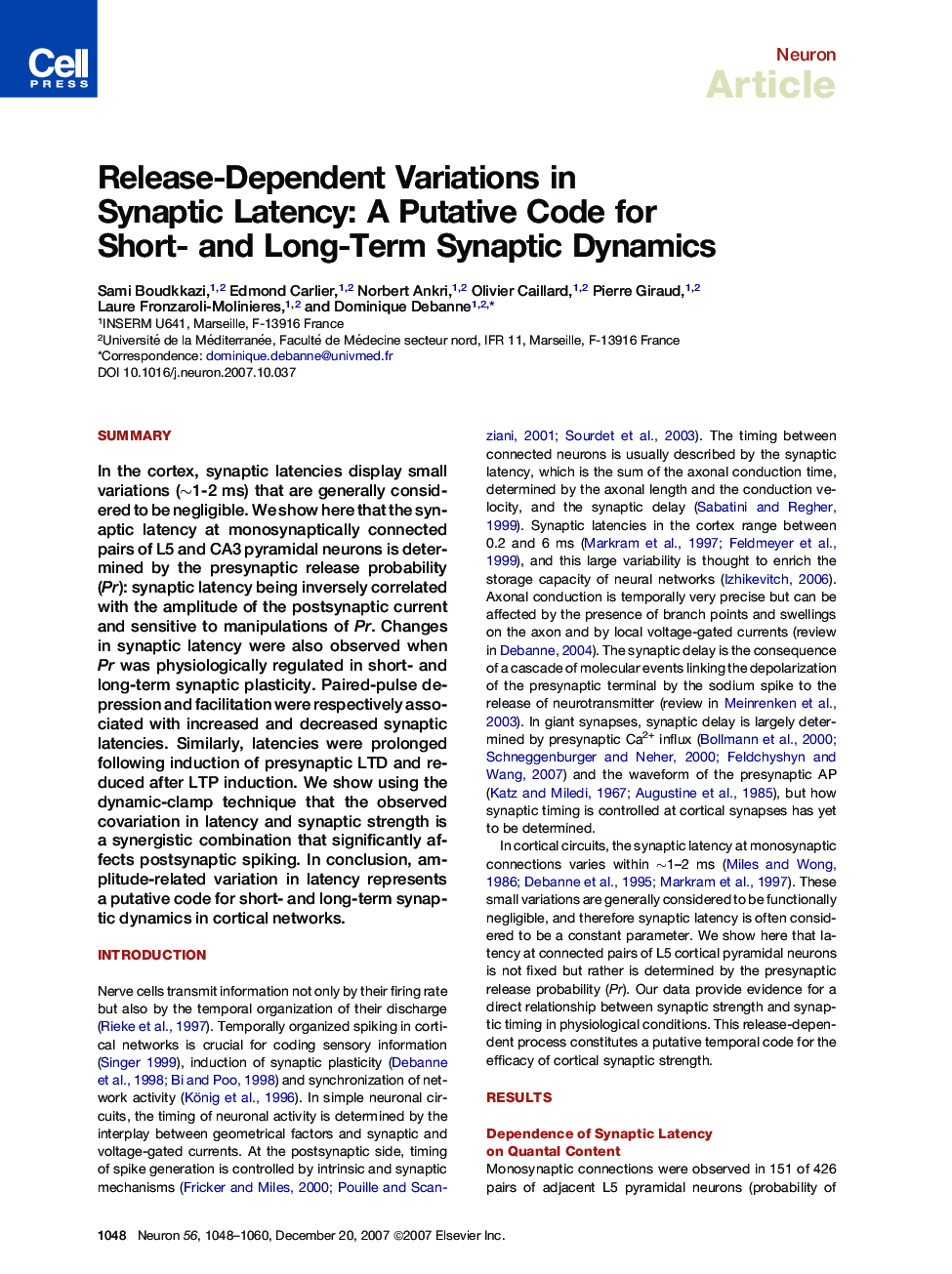| Article ID | Journal | Published Year | Pages | File Type |
|---|---|---|---|---|
| 4323195 | Neuron | 2007 | 13 Pages |
SummaryIn the cortex, synaptic latencies display small variations (∼1–2 ms) that are generally considered to be negligible. We show here that the synaptic latency at monosynaptically connected pairs of L5 and CA3 pyramidal neurons is determined by the presynaptic release probability (Pr): synaptic latency being inversely correlated with the amplitude of the postsynaptic current and sensitive to manipulations of Pr. Changes in synaptic latency were also observed when Pr was physiologically regulated in short- and long-term synaptic plasticity. Paired-pulse depression and facilitation were respectively associated with increased and decreased synaptic latencies. Similarly, latencies were prolonged following induction of presynaptic LTD and reduced after LTP induction. We show using the dynamic-clamp technique that the observed covariation in latency and synaptic strength is a synergistic combination that significantly affects postsynaptic spiking. In conclusion, amplitude-related variation in latency represents a putative code for short- and long-term synaptic dynamics in cortical networks.
